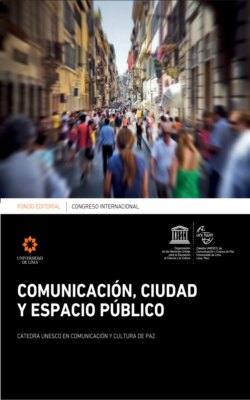Читать книгу Congreso Internacional Comunicación, ciudad y espacio público - Ángeles Margarita Maqueira Yamasaki - Страница 13
CONCLUSION
ОглавлениеThe design decision-making process in deelgebied 5’s plan and Punt en Komma’s project resonates with Stuart Hall’s definition of the negotiated code. “Decoding within the negotiated version”, Hall claims, “contains a mixture of adaptive and oppositional elements: it acknowledges the legitimacy of the hegemonic definitions to make the grand significations (abstract), while, at a more restricted, situational (situated) level, it makes its own ground rules — it operates with exceptions to the rule” (Hall, 2007, p. 102). Siza’s engagement in the urban renewal of the Schilderswijk district epitomizes the challenges brought about to the design disciplines and their relation with managerial strategies, including citizens’ participation. In effect, Siza himself addresses these challenges in his reflections on the experience of designing deelgebied 5’s plan. He contends, “the participation of residents, technicians and politicians should signify an open process, not simply appeasing or conformist, nor of a local and fragmentary nature, and not merely conducive to the adoption of models around which a consensus is easily reached”22.
Siza criticizes the dominant-hegemonic approach and advocates a negotiated code to create an open design decision-making process. This is an essential feature of a disciplinary approach able to tackle the challenges of urban renewal policies in an holistic way, from the urban scale to the dwelling unit; from the definition of the urban image and collective spaces to the detailing of the sliding door in the apartments; from the definition of the building’s materialization to the solution of acoustic problems; dealing with the agenda of policy makers and the idiosyncrasies of the residents.
In the design decision-making process of the plan for deelgebied 5 and the project for the Punt en Komma buildings the conflicts and tensions brought about in citizens’ participation became part and parcel of the creative process. As Siza put it, designers and the other stakeholders involved in housing design should reject a simplistic approach that sees “participation of residents simply as a pacifying element, so often reductive, refusing by prudence or calculation, the creative leap which qualifies it as an integral part of design” (Siza, 1987).
This case study is useful to discuss the role of the expert in this day and age, and the extent to which experts can still play a role as social mediators in the complex challenges related with the future development of inclusive, resilient cities. According to Zigmunt Bauman, “expertise promises the individuals means and abilities to escape uncertainty and ambivalence and thus to control their own life-world. It presents the dependency on the experts as the liberation of the individual; heteronomy as autonomy” (Bauman, 1993, p. 223). Bauman plainly asserts the emancipatory role of the expert as both a mediator and interpreter, bridging the gap between the objective and the subjective worlds. While doing this, he seems to deem ambivalence as an undesirable condition. However, the case study discussed in this (Bauman)article suggests something different.
Siza’s approach in the design decision-making process for the deelgebied 5 plan, and the Punt en Komma buildings challenges Bauman’s idea of the expert as a proxy for individual escape from uncertainty and ambivalence. Rather, the power of ambivalence in Siza’s design approach is, I would contend, liberating the individual through stimulating his confrontation with the ambiguities and contradictions of the design process. In this context, the nexus between the author and the addressee is conveyed by a negotiated code that accommodates the universal and the situated, order and chaos, standards and contingency, modernity and the vernacular; in other words, autonomy and heteronomy.
